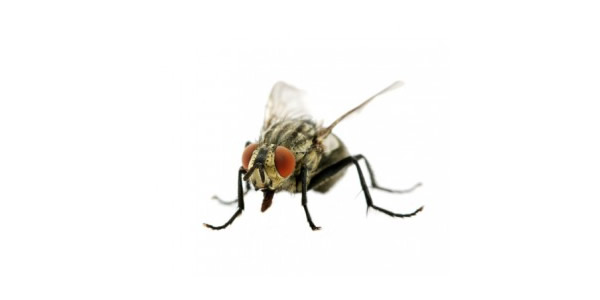Home Pest Guide Cluster Fly

Description
Cluster flies are a group of flies in the genus of Pollenia. They share similar behavior and life cycle.
Size: Adults can be 3/8 to 1/2 inches long.
Color: Ranges from gray to dark gray with black and silver colored abdomens.
The most common species Pollenia rudis can be recognized by distinct lines or stripes behind the head, short golden-colored hairs on the thorax and irregular light and dark gray areas on the abdomen.
Importance
These flies normally live outside. In late summer and fall, when the weather turns cool, cluster flies may congregate on sunny walls. They enter the building to overwinter through any available access. Once inside, these flies often hibernate in a cluster in attics and wall voids, in dark corners, cracks, beneath curtains, behind furniture etc. On warm, sunny days in the winter, the flies may emerge from their hiding place and swarm on windows causing great annoyance by their buzzing and by their presence. Their droppings may leave stains on walls, around window frames and on blinds and curtains. In the spring, the sluggish cluster flies will migrate from their hibernating areas to living spaces and gather on windows as they are attracted to light.
Piles of dead flies left in the walls can sometimes contribute to the presence of other nuisance insects such as the carpet beetle or larder beetle.
The life cycle of the cluster fly is somewhat interesting; in the spring the female cluster fly lays eggs in the soil, often in entry point to earthworm burrows. The eggs hatch in about 3-7 days and the larvae hatch and search for the earthworm. Once the larvae have found the worm, they enter into the worm and develop within it requiring 27-39 days. They leave the earthworm and pupate and the adult fly emerges and the cycle continues.
Cluster flies are not related to livestock production. They do not pose any risk to people or pets and they do not develop in manure or garbage. They are not interested in food and are not a sign of unsanitary conditions.
Control Methods
The treatment for cluster flies is very time sensitive, effective treatments must be performed in early fall.
To prevent the entry of the flies in the fall, screen attics and roof vents and fill all cracks, crevices and other points of entry with caulking or other crack filler. Tighten baseboards and quarter round. Flies found on the windows can be killed and removed with a vacuum cleaner.
Planting tall vegetation on the south and west sides of the house will reduce the attractiveness of these walls to flies seeking warmth and shelter in fall.
Treatment of areas near houses to control earthworms is NOT effective since adult flies can travel long distances.





